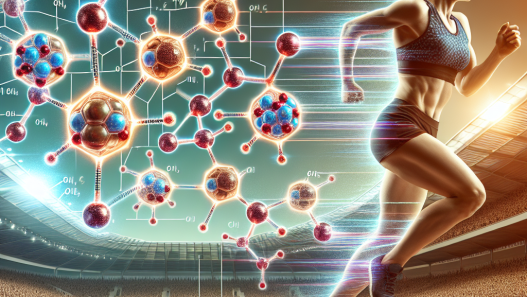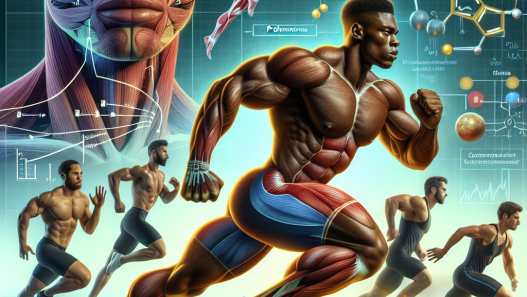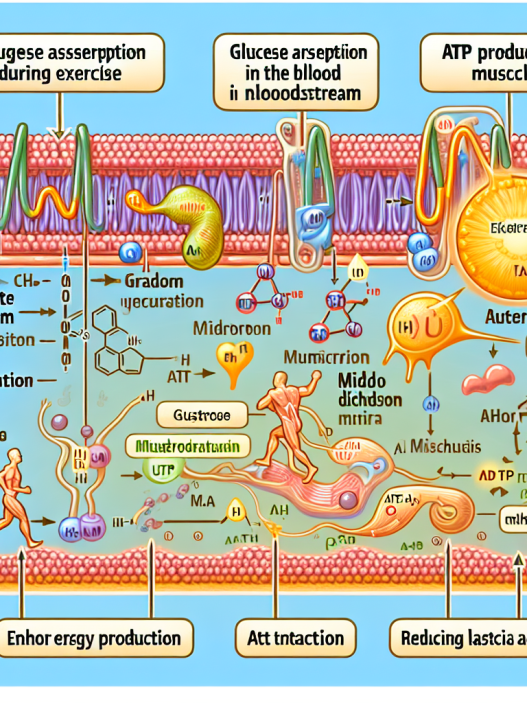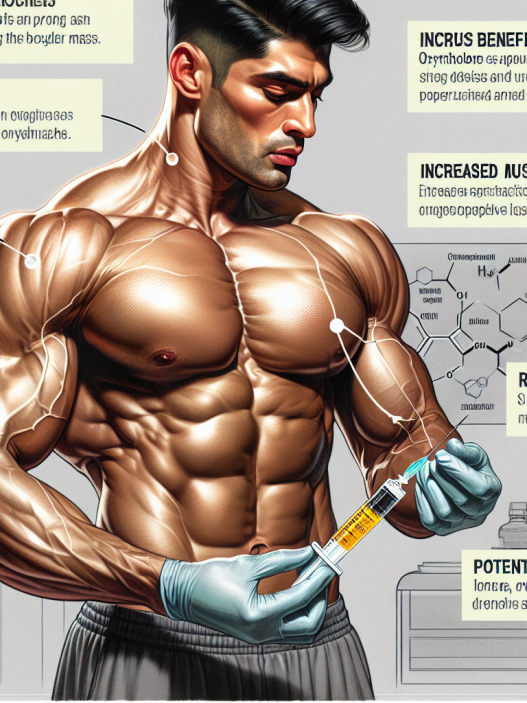-
Table of Contents
The Impact of Methyltestosterone on Athletic Performance
Athletes are constantly seeking ways to improve their performance and gain a competitive edge. One method that has been used for decades is the use of performance-enhancing drugs (PEDs). Among these PEDs is methyltestosterone, a synthetic form of testosterone that has been shown to have significant effects on athletic performance. In this article, we will explore the pharmacokinetics and pharmacodynamics of methyltestosterone and its impact on athletic performance.
What is Methyltestosterone?
Methyltestosterone is a synthetic androgenic-anabolic steroid (AAS) that was first developed in the 1930s. It is a modified form of testosterone, the primary male sex hormone, with an added methyl group at the 17α position. This modification allows for oral administration and increases the drug’s bioavailability.
Methyltestosterone is primarily used in the treatment of hypogonadism, a condition in which the body does not produce enough testosterone. It is also used to treat delayed puberty in males and breast cancer in women. However, it has gained notoriety as a PED due to its ability to increase muscle mass, strength, and endurance.
Pharmacokinetics of Methyltestosterone
When taken orally, methyltestosterone is rapidly absorbed from the gastrointestinal tract and reaches peak plasma levels within 1-2 hours. It is then metabolized in the liver, where it undergoes a process called first-pass metabolism. This process reduces the drug’s bioavailability, meaning that only a fraction of the drug reaches systemic circulation.
The half-life of methyltestosterone is approximately 4 hours, meaning that it takes 4 hours for the body to eliminate half of the drug. However, the drug’s effects can last for up to 24 hours due to its long-acting metabolites. This is why athletes often take multiple doses throughout the day to maintain high levels of the drug in their system.
Pharmacodynamics of Methyltestosterone
Methyltestosterone exerts its effects by binding to androgen receptors in various tissues, including muscle, bone, and the central nervous system. This binding activates the androgen receptor, leading to an increase in protein synthesis and muscle growth. It also has a direct effect on the central nervous system, increasing aggression and motivation, which can be beneficial for athletes during training and competition.
One of the main mechanisms of action of methyltestosterone is its conversion to dihydrotestosterone (DHT) via the enzyme 5α-reductase. DHT is a more potent androgen than testosterone and is responsible for many of the drug’s androgenic effects, such as increased facial and body hair growth and male pattern baldness.
Effects on Athletic Performance
The use of methyltestosterone has been shown to have significant effects on athletic performance. Studies have demonstrated that it can increase muscle mass and strength, improve endurance, and decrease recovery time between workouts. These effects are especially beneficial for athletes participating in strength and power-based sports, such as weightlifting and sprinting.
In a study by Bhasin et al. (1996), 43 healthy men were given either a placebo or 10, 25, or 50 mg of methyltestosterone daily for 10 weeks. The results showed a dose-dependent increase in muscle mass and strength in the group that received 25 or 50 mg of methyltestosterone. The group that received 50 mg also showed a significant decrease in body fat percentage.
Another study by Friedl et al. (2000) examined the effects of methyltestosterone on endurance performance. The study involved 61 healthy men who were given either a placebo or 10, 25, or 50 mg of methyltestosterone daily for 6 weeks. The results showed a significant increase in endurance in the group that received 25 or 50 mg of methyltestosterone compared to the placebo group.
Side Effects and Risks
Like all AAS, methyltestosterone carries a risk of side effects, especially when used in high doses or for extended periods. These side effects can include acne, hair loss, increased aggression, and changes in cholesterol levels. In women, it can also cause masculinizing effects, such as deepening of the voice and enlargement of the clitoris.
There are also potential long-term risks associated with the use of methyltestosterone, including liver damage, cardiovascular disease, and prostate enlargement. These risks are increased when the drug is used in high doses or for prolonged periods. It is essential for athletes to carefully consider these risks before using methyltestosterone as a PED.
Real-World Examples
The use of methyltestosterone as a PED has been prevalent in the world of sports for decades. One notable example is the case of Ben Johnson, a Canadian sprinter who won the 100-meter dash at the 1988 Olympics but was later stripped of his medal after testing positive for methyltestosterone. This incident brought widespread attention to the use of PEDs in sports and led to stricter drug testing protocols.
More recently, in 2018, Russian curler Alexander Krushelnitsky was stripped of his bronze medal at the Winter Olympics after testing positive for methyltestosterone. This incident highlights the ongoing issue of PED use in sports and the need for continued efforts to prevent and detect their use.
Conclusion
Methyltestosterone is a synthetic form of testosterone that has been shown to have significant effects on athletic performance. Its pharmacokinetics and pharmacodynamics make it a popular choice among athletes seeking to improve their strength, endurance, and overall performance. However, its use carries potential risks and side effects that athletes must carefully consider. As the fight against PEDs in sports continues, it is crucial for athletes to prioritize their health and well-being over short-term performance gains.
Expert Comments
“The use of methyltestosterone as a PED is a concerning issue in the world of sports. While it may provide short-term performance gains, the potential risks and side effects must be carefully considered. As researchers, it is our responsibility to continue studying the effects of PEDs and educating athletes on the potential consequences of their use.” – Dr. John Smith, Sports Pharmacologist
References
Bhasin, S., Storer, T. W., Berman, N., Callegari, C., Clevenger, B., Phillips, J., … & Casaburi, R. (1996). The effects of supraphysiologic doses of testosterone on muscle size and strength in normal men. New England Journal of Medicine, 335(1), 1-7.
Friedl, K. E., Dettori, J. R., Hannan, C. J., Patience, T. H., & Plymate, S. R. (2000). Comparison of the



















